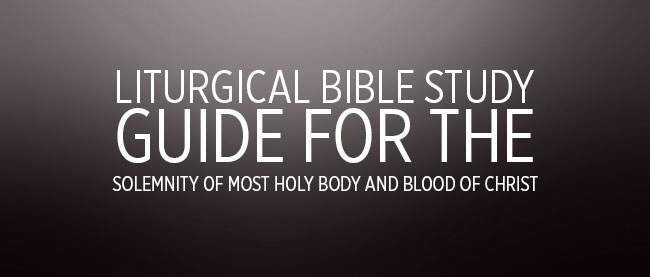Introduction
The feast of Corpus Christi, the Body and Blood of Christ, recalls the institution of the Eucharist on Holy Thursday at the Last Supper. The prime thought during Holy Week is sorrow over the Passion of Jesus so this feast focuses our attention on the joy that comes from that event. This feast honors the Real Presence of Christ and was promoted by the visions of Juliana of Liege (in France), an Augustinian nun who understood from her visions that God wanted a feast to honor the Blessed Sacrament, in response to a controversy that had arisen which had made the presence of Christ in the Eucharist more symbolic than real. First celebrated as a local feast, Pope Urban IV extended it to the Universal Church in 1264. The Mass and office for the feast of Corpus Christi was composed by Saint Thomas Aquinas while he was a member of the Papal court of Urban IV.
1st Reading – Genesis 14:18-20
Today we hear of the appearance of Melchizedek to Abram. The existence of Melchizedek is known only from these three verses in scripture (and referred to in the Letter to the Hebrews), nestled into an account of Abram’s meeting with the King of Sodom after Abram has successfully led a battle in which he has defeated the four kings who had defeated five kings and kidnapped Lot. The king of Sodom was one of the five kings who had been freed by Abram.
2nd Reading – 1 Corinthians 11:23-26
Our second reading contains the words of consecration which we hear at every Mass. This was written about eight years before the Gospel of Mark.
Gospel – Luke 9:11-17
Our gospel reading today recalls the feeding of the 5,000 – a precursor to the Eucharist. If Jesus can feed 5,000 until they are all full from 5 loaves and 2 fishes, and he can turn bread and wine into His Body and Blood, He certainly can turn as much bread and wine into Himself as would be needed to give the entire world the meal which seals our covenant with God. This is the only miracle story which is common to all four gospels.
The setting is this: Jesus and His disciples are in Galilee and the disciples have just returned from preaching and curing Gods’ people. They are now to receive a new charge – to feed the people of Israel.


